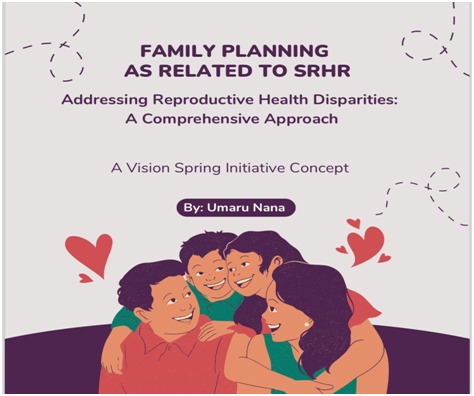BACKGROUND OF STUDY:
Family planning refers to the ability of individuals and couples to anticipate and attain their desired number of children, spacing, and timing of births. It involves:
1. Contraception: Using methods to prevent pregnancy, such as birth control pills, condoms, or sterilization.
2. Fertility awareness: Understanding one’s own fertility and menstrual cycle to plan for pregnancy or prevent it.
3. Reproductive health services: Accessing healthcare services, including prenatal care, safe delivery, and postpartum care.
4. Education and counseling: Receiving information and guidance on family planning options, reproductive health, and parenting.
5. Autonomy and decision-making: Making informed choices about one’s own reproductive health, free from coercion or discrimination.
Family planning benefits individuals, families, and communities by:
1. Improving maternal and child health
2. Reducing unintended pregnancies and abortions
3. Enhancing education and economic opportunities
4. Promoting gender equality and empowerment
5. Supporting sustainable population growth and development

Effective family planning requires access to comprehensive reproductive health services, education, and support.
Family planning is a critical component of Sexual and Reproductive Health and Rights (SRHR). Here are some key aspects of family planning as related to SRHR:
1. Autonomy: Individuals have the right to make informed decisions about their reproductive health, free from coercion or discrimination.
2. Access: People should have access to a range of safe and effective family planning methods, including contraception and safe abortion.
3. Equity: Family planning services should be accessible to all, regardless of age, gender, income, or social status.
4. Informed choice: Individuals should have accurate information about family planning options to make informed decisions.
5. Privacy and confidentiality: Family planning services should respect individuals’ privacy and maintain confidentiality.
6. Quality of care: Family planning services should be provided by skilled healthcare providers in a supportive and non-judgmental environment.
7. Integration: Family planning should be integrated into comprehensive sexual and reproductive healthcare services.
8. Empowerment: Family planning enables individuals, particularly women, to make choices about their lives, education, and economic opportunities.
By recognizing family planning as a fundamental aspect of SRHR, we can ensure that individuals have the freedom to make choices about their reproductive health, well-being, and futures.
ADDRESSING REPRODUCTIVE HEALTH DISPARITIES: A COMPREHENSIVE APPROACH
Introduction
Reproductive health disparities persist in Nigeria, affecting marginalized communities and perpetuating health inequities. These disparities result from systemic barriers, social determinants, and lack of access to quality care. Addressing reproductive health disparities requires a multifaceted approach that involves healthcare providers, policymakers, community organizations, and individuals.
I. Understanding Reproductive Health Disparities
– Definition: Reproductive health disparities refer to the unequal access to quality reproductive healthcare services, resulting in poor health outcomes for marginalized communities.
– Populations affected: Racial and ethnic minorities, low-income individuals, rural communities and immigrants.
– Disparities in:– Access to contraception and family planning services
– Maternal mortality and morbidity
– Sexually transmitted infections (STIs) and HIV
– Cancer screening and treatment
– Reproductive autonomy and decision-making
II. Causes of Reproductive Health Disparities
– Systemic barriers:
– Lack of insurance coverage and affordability
– Limited healthcare provider availability and diversity
– Language and cultural barriers
– Social determinants:
– Education and economic instability
– Housing and transportation insecurity
– Food insecurity and nutrition
– Provider biases and stereotypes
III. Strategies for Addressing Reproductive Health Disparities
– Increase access to quality care:
– Expand insurance coverage and Medicaid
– Improve healthcare provider diversity and cultural competency
– Enhance language access and interpretation services
– Address social determinants:
– Implement community-based initiatives and partnerships
– Support education and economic empowerment programs
– Address housing and transportation barriers
– Promote reproductive autonomy:
– Ensure access to comprehensive sex education
– Support reproductive decision-making and choice
– Address provider biases and stereotypes
IV. Policy and Advocacy Solutions
– Federal and state policy reforms:
– Expand Medicaid and insurance coverage
– Increase funding for reproductive health programs
– Protect and strengthen reproductive rights
– Community advocacy and engagement:
– Support community-based initiatives and partnerships
– Amplify marginalized voices and perspectives
– Promote reproductive health equity through education and awareness
V. Conclusion
Addressing reproductive health disparities requires a comprehensive approach that involves multiple stakeholders and strategies. By understanding the causes of disparities, implementing evidence-based solutions, and promoting policy and advocacy efforts, we can work towards reproductive health equity and ensure that all individuals have access to quality care and services.
Umaru Nana Awawu Ladidi – Storyteller
